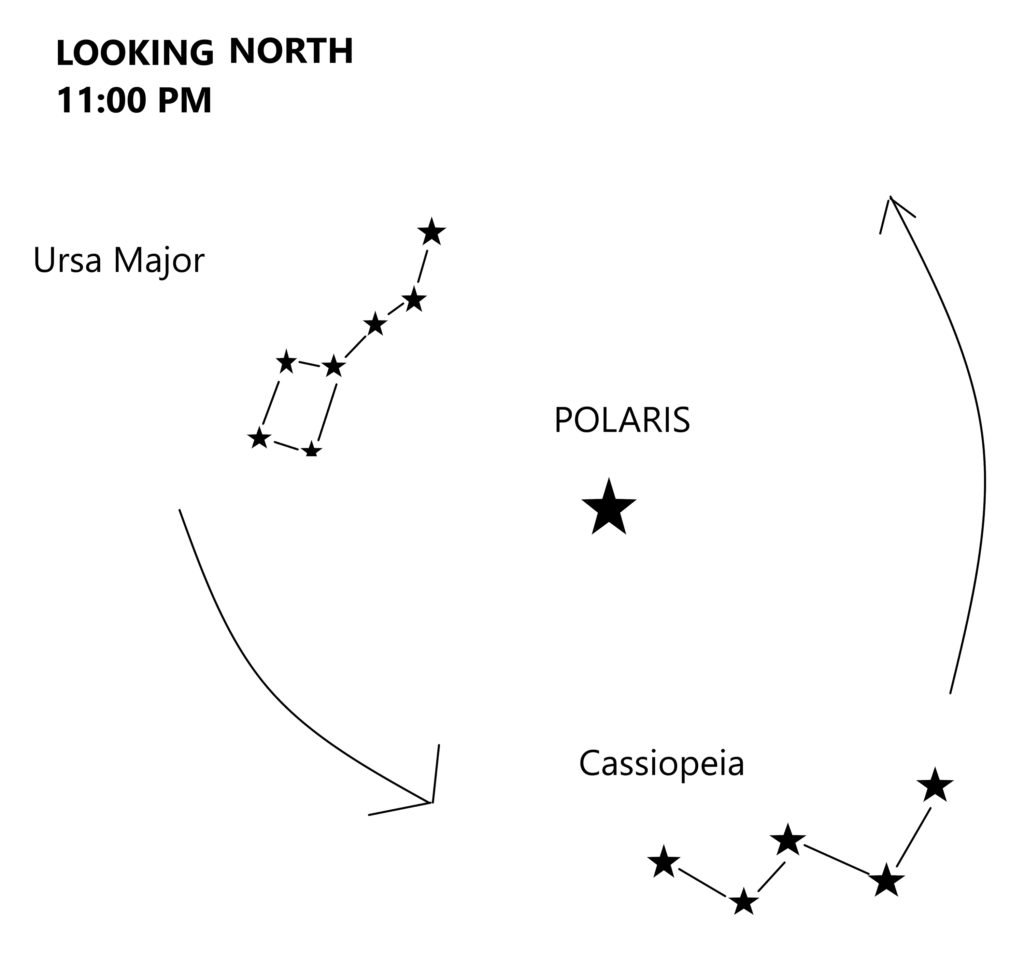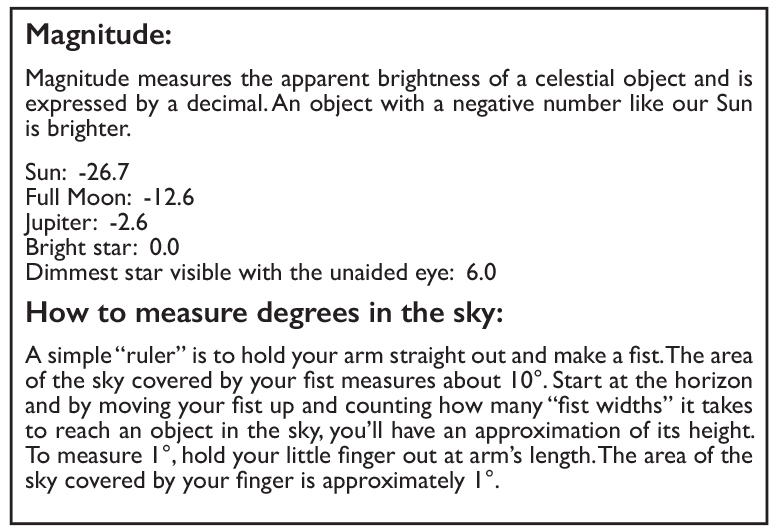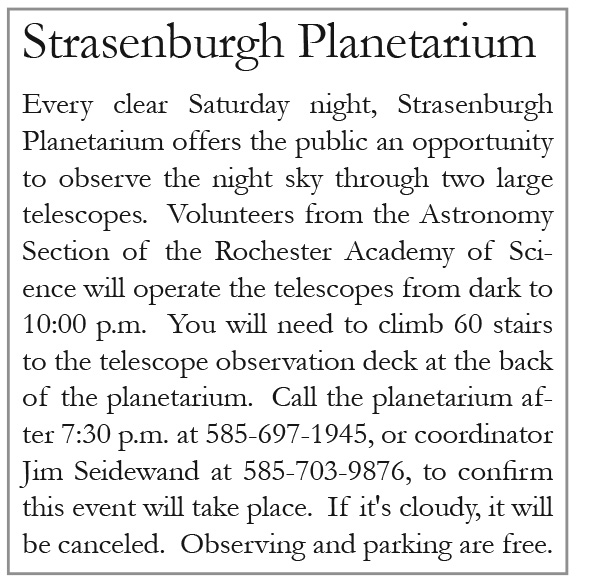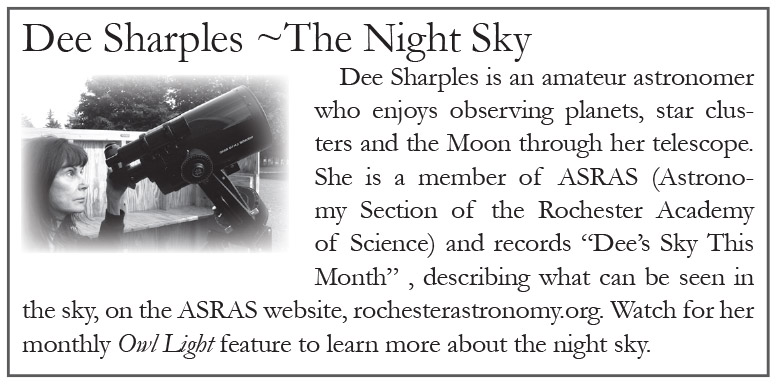The Night Sky ~ June 2019
by Dee Sharples –
“Old Moon in the New Moon’s arms”
Plus summer solstice, Jupiter, Ursa major & Cassopeia
the night sky can sometimes feel a little frustrating. I stepped outside at dusk on May 6 to see the predicted crescent moon and the planet Mars looking like a reddish star situated close together in the western sky. It was a mild beautiful evening, clear skies in every direction . . . except for the dark ominous clouds closing in from the western horizon.
The crescent Moon was there, beautiful in the twilight, but as I waited for the sky to darken so that I would be able to spot dimmer Mars, the clouds steadily rolled in soon obscuring even the moon before I was able to spot the planet. Yes, it was a little frustrating, but on the up-side, I was out under the sky, enjoying the spring weather and drinking in the beauty of that slender crescent moon.

A thin crescent is a new moon and it’s the time when you can still see the complete round lunar shape – the bright crescent and the dimly lit larger night side. It’s a special event in itself – referred to as the “Old Moon in the New Moon’s arms”. The Sun’s light reflects off the surface of the Earth onto the moon, creating earthshine, a dull glow that barely lights up the night portion of the moon. And this is an event that happens every 29.5 days. If it’s clear on June 7th, look for this pretty sight once again as the Sun sets.
Although you can never count on a clear sky when you want to look up at the stars and planets, you can count on certain constellations always being in the northern sky every day of the year.
From out vantage point on Earth, two easily recognized constellations Ursa Major (Big Dipper) and Cassiopeia (the Queen) move counter-clockwise around Polaris, the North Star. If you consistently look to the north every clear night, they’ll be there like reliable friends but always shifting positions as the months and time of day change.

Ursa Major can be found high in the northwest around 11:00 p.m. each night in June, while Cassiopeia will be opposite it, low in the southeast. Before daybreak they will have shifted positions as they circle Polaris, with the Big Dipper now low in the southwest and Cassiopeia higher in the northeast.
Polaris is not the brightest star in the sky as many people believe. It’s a somewhat dimmer star at magnitude 1.97 located due north, about 43 degrees up from the horizon. It actually ranks 48th in a list of the 50 brightest stars in the sky.
Our planet is tipped on its axis at 23.5 degrees which means Earth’s North  Pole happens to point almost directly toward Polaris, designating it as our North Star. All the stars in the sky appear to us on Earth to circle Polaris.
Pole happens to point almost directly toward Polaris, designating it as our North Star. All the stars in the sky appear to us on Earth to circle Polaris.
Jupiter, the largest planet in our solar system, can be seen rising in the southeast after the Sun sets. On June 10, Jupiter reaches “opposition”, which means it will lie directly opposite our Sun and be visible for the entire night. This month it will be its brightest for the entire year, shining brilliantly at magnitude -2.6.
The summer solstice, the first official day of summer, occurs on June 21st at 11:54 a.m. We’ll have fewer hours of darkness but many more hours of daylight to enjoy our beautiful Earth and the night sky.
